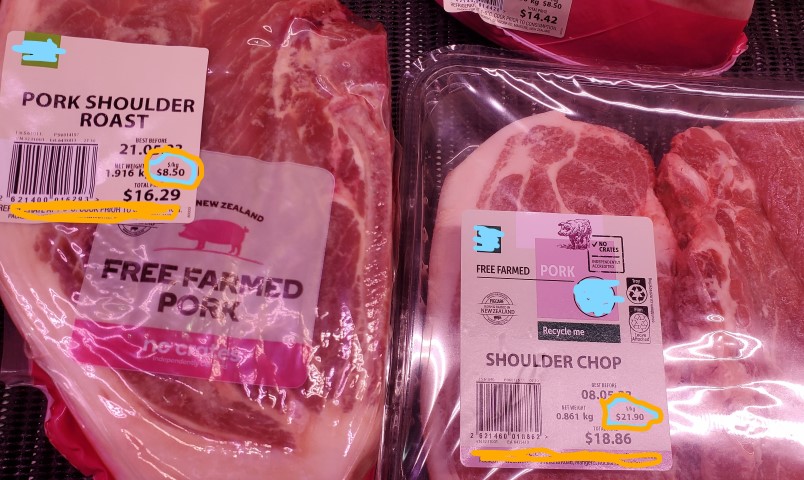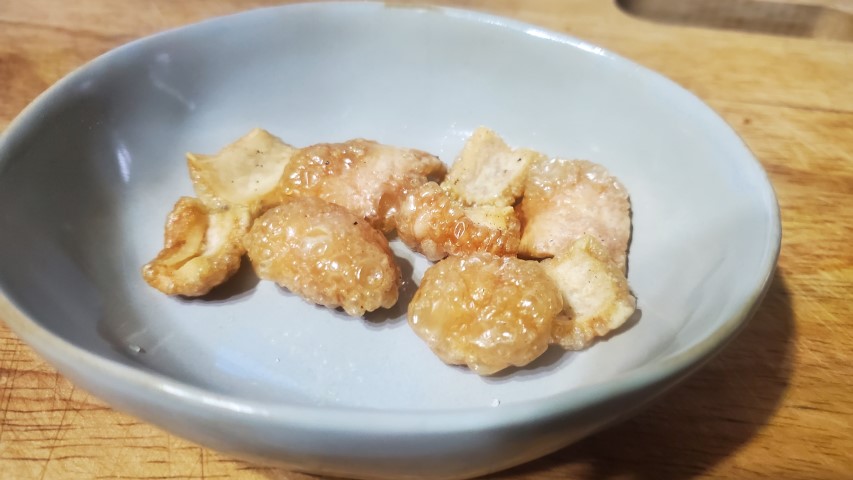Table of Contents
- Does Grinding Meat Save Money?
- Different Meats you can Grind to Save Money
- Different Cuts of Meat that Save You Money when Ground
- Grinding Slow Cook or Tougher Meats Saves Money
- Wild Red Meat Grinding
- Different Grinds Daimeter You Can Do
- The versatility of Ground Meat
- Storage of Ground Meat
- Economical Portions of Ground Meat
- Is a Meat Grinder Worth it?
For decades, immersed in studying, working, learning, and teaching in the craft of meat curing, now sharing his passion with you through eat cured meat online resource.
Having the right tool to mince and grind your meat could potentially save some money. I wanted to share how I do it and what I’ve learned over the years.
When I got my first grinder, it was about portioning bulk meat (farmed and wild), whilst also making small goods like sausages.
After a few decades, I’ve found through experiences there are good mincers and bad mincers – and of course what makes sense to grind up, in terms of meats.
You need to use the mincer enough to justify having another piece of equipment. If you’re going to make sausages or even salami, then it’s a ‘must’.
To have a mincer for dishes that need ground meat has the potential to save costs, as long as you’re willing to put in a little more effort and be organized.
Does Grinding Meat Save Money?
Yes, if you buy meat in bulk and portion it. The portions can be frozen for dishes in the future; or you can freeze dishes made with ground meat. Buying tough and slow-cooking meat is economical and ideal to grind for more value.
As an example, I can buy a chunk of pork shoulder (also called butt), for half the price of ground pork mince. Some come with a bone or part of rib, I happily quickly roast these in the air fryer. Also, bones go into the stock/broth bag in the freezer either before or after I roast them.

Anyone can take a bone out of a bulk muscle cut, just do it slow, with a sharp knife, and follow the bone. Always point the knife away from where you are cutting!
101 knife basic.
I like to used to make sure no bone or cartilage gets chipped off.
I’ve learned from a mistake once, when we made a big patch of sausages, and when we were deboning the meat – one of us got a chunk of cartilage or possibly a knee cap.
It went through the grinder ok (it’s a powerful 1hp motor – nearly commercial), but the end result wasn’t nice when we were eating the sausages, with small chards to deal with.
Also, it makes a big difference to carefully slice out the tougher sinew, this varies depending on the cut, age and diet of the animal.
Different Meats you can Grind to Save Money
The main types of meat that most people will be grinding are pork and beef.
I’m definitely not saying that these are the only two types of meat that you can be grinding up.
They are the most common meats you’ll get in bulk. However, at the same time, you still want to be looking for quality and make sure the welfare of the animal was decent.
Remember, you are actually putting this meat inside your own body!
All sorts of different types of meat could be ground-up if you can get bulk amounts, and also wanted to save some dollars. Pidgeon, rabbit, duck or even fish – gather your own wild game these could all be options, potentially.
Different Cuts of Meat that Save You Money when Ground
To be economical, I have frozen bulk meat in cubes which are ready for the grinder, but I haven’t ground them yet. I’ll either use them for salami or cook them.
Then I have the option of either using the cubes for slow cooking like stews.
Whilst I still have the option of keeping the frozen meat for making patties, sausages, or salami.
If the ground raw meat is cooked, then it can be refrozen (since cooking is one type of sterilization).
Bulk Pork Shoulder or Butt
You are very likely – in the Western world – to be able to find pork shoulder or otherwise known as pork on special.
Many pork shoulders I have dissected to freeze them to save some money. Often, if the pork animal is less than a year old, you won’t have much tough sinew to remove from a younger animal, also the skin isn’t as tough.
Freezing the cubes for things like curries/stews or for minced meat are both really good options.
Generally, the role of pork shoulder or pork butt contains about 30% fat, which works out ideal for patties or sausages (link to the sausage category on this site).
Pork Skin
For skin on pork, you need to remove this from cuts like the pork butt. Just go slow with long strokes. You can also use a long flexible filleting knife and run it close to the board like you are taking the skin of a fish fillet.
For pork skin, I like to sprinkle it with salt and leave it on a plate or rack in the fridge for 2-3 days, then again skim off as much fat on the skin as possible.
I place them in a preheated air fryer and they are crispy delicious scratchings that puff up.
Done in 5 mins.

Beef Shoulder or Chuck
Often cost-effective when you buy in bulk, so it’s also perfect for grinding up and will save you money.
Since beef in America is very fat and primarily raised in confined areas, these standard bovines often carry a lot of fat. Ideally, grass-fed bovines’ meat works better.
Grinding Slow Cook or Tougher Meats Saves Money
Any cut of animal meat that you would buy, specifically, such as Chuck steak or whole Chuck really makes sense to grind out if you want to portion and save.
Once it has been ground it doesn’t have to be a slow-cooked piece of meat anymore as well.
Wild Red Meat Grinding
What I’ve found with most wild game like venison is that they are often very lean and there’s not a lot of fat.
The meat such as the front legs otherwise known as the four quarters, or different muscle groups of the hind leg have been minced.
That is very comparable to beef, even though, it is minced it seems the meat doesn’t tend to taste dry and has obviously also been tenderized by the process of grinding the meat.
After taking in the variations of wild game (here are some other tips on wild game sausage making) meat in the world, you have to do your research – since often you won’t exactly know what the wild game has eaten before you want to eat it!
Different Grinds Daimeter You Can Do
A universal diameter plate for grinding meat is 3-5mm or 0.1-0.2 inches. This is acceptable for most meats to have some texture whilst being tenderized, ideal for portioning ground meat to save money.
If you have 0.2″ or more, you can also re-grind the meat a second time.
I prefer 4 blades behind the mincing plate, although 3 can suffice, also. I wouldn’t grind meat generally with 2 blades, which is more for big chunks of fat, sometimes, known as showcase fat for salami and the like.
The versatility of Ground Meat
With minced meat you have ready to go from the freezer, here are some suggestions for excellent meals:
- Lasagne
- Spaghetti Bolognese
- Meat Patties
- Sausages
- Salami
- Kofta Kebab / Cevapas
- Cabbage, Rice Stir fry
- Nachos with Ground Meat
Storage of Ground Meat
Remove as much oxygen out of a bag as possible for freezing – it will always make it last longer.
If you have the space in the freezer for a tray, you can line it with baking paper, then freeze in portions like a ball or mound. If you do it for half a pound to a pound of meat. You leave it overnight until it has frozen.
Then you’ll find that the frozen meat won’t stick to each other and you can put balls of meat all into one bag saving all the individual plastic bags, the world has enough plastic floating around already.
You can also do this with patties, bacon, or other bits of meat that you want to freeze separately – then bag together.
Economical Portions of Ground Meat
The general rule I hear from a lot of dietitians is that the meat you consume should be able to fit in the palm of your hand, your body can’t digest or absorb more than about 20 g in one meal.
So if you work on about 2.8-4.2 oz/ 80-120grams g of meat per person that would be a good portioning.
100 grams or 3.5oz of meat is approx. 20 grams of protein.
Is a Meat Grinder Worth it?
A meat grinder or mincer is worth the investment if you are going to use it regularly, at least 2 to 4 times a year to produce minced meat to freeze. Also using the minced meat for patties, sausages, salami to be frozen, too. And saving money.
Either go manual and get some sturdy one that you just wind manually or spend a bit to get at least a 0.5hp, sturdy heavy grinder. I’ve written a lot about the grinders that aren’t ‘throwaway’ and will actually last. Especially the factors you need to look for, here is a link to that info.
Oh, in my opinion, the plastic kitchen aid mixers aren’t very good with the attachment, they aren’t clean cutting the meat very well, since they do not have the power built into them, they are mixers primarily not grinders. You are better off getting a manual grinder/mixer than a kitchen aid.
Unless you are only going with small portions of less than 1/2 a pound.

